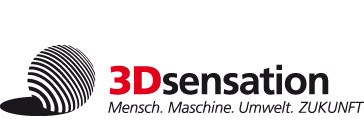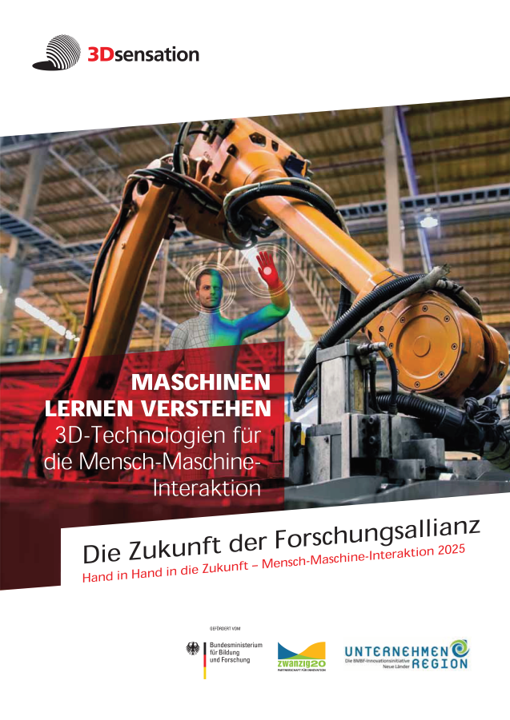In the future, people will work and act more and more closely with technologies. But how can we facilitate meaningful and goal-oriented interaction? How can machines become really useful assistants that support people in their everyday life and work?
The know-how that has been acquired since 2013 through the development of breakthrough innovations for a safe and efficient interaction of man, machine and environment has been outlined by 3Dsensation in the white paper "The Future of the Research Alliance" (german white paper: "Die Zukunft der Forschungsallianz" ).
At this year's digital general meeting on November 10, we were able to hand over this strategy paper to Dr. Román Kucharzak from the Department for Sustainable Regional Innovation Initiatives of the BMBF, representing Dr. Gisela Philipsenburg, head of the department.
It delineates current trends, future scenarios and research topics for the fields of demand addressed by the consortium (production, health, safety, mobility) that are particularly relevant for the future. Furthermore, 3Dsensation has identified five explicit recommendations for action. First and foremost, the education of the next generation of experts should be promoted. Likewise, cross-disciplinary research and cooperation should be supported. On a technical level, the development of multimodal sensor networks is as paramount as the far-reaching integration of sensor technology, robotics and artificial intelligence in new technologies. Above all, our project partners called for the promotion of scenarios for natural human-machine interaction in everyday life.
In an interview for the white paper, Prof. Dr. Gerd Litfin, chairman of the research alliance's advisory board, commented that machines should be “released from their cages”. He added that we needed an open-minded approach how to handle machines in familiar and everyday environments instead of banishing them to dark workspaces and production halls.
Together we look ahead at the future of human-machine interaction. The explanation of future research projects should encourage to take the necessary steps to enable further interdisciplinary research within the above-mentioned framework.
In this manner, the course is to be set for a successful future in which Germany stands out as a strong location for business and innovation and people feel well equipped to meet the challenges that lie ahead.
 Man. Machine. Environment. FUTURE
Man. Machine. Environment. FUTURE 